Don't wanna be here? Send us removal request.
Text
Week 7: Digital Citizenship Case Study: Social Media Influencers And The Slow Fashion Movement
People who have amassed a substantial and active following on social media sites (including YouTube, Instagram, and TikTok) who have the capacity to influence their viewers' beliefs, actions, and consumption habits through content production and personal branding are known as social media influencers.
Generally speaking, influencers are regarded as reliable thought leaders in particular fields, such as gaming, fashion, beauty, fitness, politics, and sustainability. Their impact is derived from perceived knowledge, relatability, and sincerity rather than institutional authority (Abidin 2016). According to (Marwick 2015) strategically presenting themselves to their followers, they establish prosocial relationships that allow them to influence social values, public opinion, and consumer behavior.
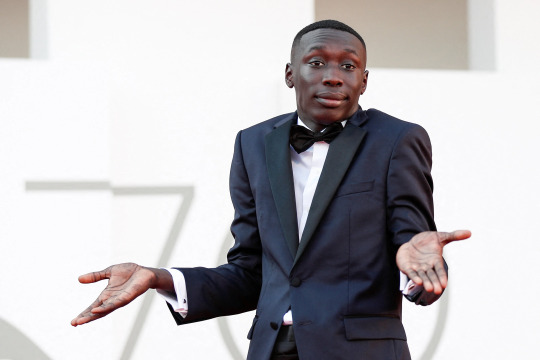
In 2024, TikTok paid Khaby Lame $20 million—all without him saying a single word. With over 162 million followers and earning $750,000 per post, he’s the highest-paid content creator on the platform. What does this mean for business owners and creators? It’s a reminder that the creator economy is exploding. Projected to become a $500 billion industry in the next few years. For business owners, now is the time to lean into the power of social media and partner with creators to amplify your message. The opportunities are limitless for those who are willing to do the thing every one thinks is nuts!
A movement known as "slow fashion" advocates for ethical, environmentally friendly, and conscientious methods of producing and consuming clothing. It promotes ethical labour practices, lessens the impact on the environment, prioritises quality over quantity, and promotes thoughtful consumption (Fletcher 2010).
According to (Clark 2008) the movement criticises the fast fashion paradigm, which is based on low-cost labour, mass production, and quick trend cycles that result in excessive consumption and serious environmental damage. The tenets of sustainability, ethical labour, transparency, and durability form the foundation of slow fashion.

The American outdoor apparel company Patagonia was established in 1973 and is well known for being a leader in the slow fashion movement and a pioneer in sustainable fashion. Responsible consumption, ethical production, and environmental activism—all fundamental principles of slow fashion—have formed the foundation of the brand's identity.
Patagonia's sustainable manufacture, lengthy product life, and corporate environmental responsibility are all examples of the fundamental principles of slow fashion (Joy 2012).
Patagonia has initiatives in slow fashion movements. Through its Worn Wear project, Patagonia promotes clothing repair, reuse, and recycling among its patrons. It sells used Patagonia gear, provides repair services, and tells tales that highlight the importance of durable apparel. This reduces waste and promotes circular consumption.
References Abidin, C. (2016). “Aren’t these just young, rich women doing vain things online?”: Influencer selfies as subversive frivolity. Social Media + Society, 2(2), 1–17. https://doi.org/10.1177/2056305116641342
Marwick, A. E. (2015). You may know me from YouTube: (Micro-)Celebrity in social media. In P. D. Marshall & S. Redmond (Eds.), A Companion to Celebrity (pp. 333–350). Wiley Blackwell.
Instagram. (n.d.). https://www.instagram.com/reel/DFbeMkzg3BO/
Fletcher, K. (2010). Slow fashion: An invitation for systems change. Fashion Practice, 2(2), 259–265. https://doi.org/10.2752/175693810X12774625387594
Clark, H. (2008). SLOW + FASHION—an Oxymoron—or a Promise for the Future...? Fashion Theory, 12(4), 427–446. https://doi.org/10.2752/175174108X346922
0 notes
Text
Week 6: What Is Digital Citizenship? Hashtag Publics, Political Engagement And Activism
Digital citizenship is the ability to interact with digital surroundings effectively, responsibly, and morally is known as digital citizenship. It encompasses all of the ways people engage, communicate, and contribute to online communities and society at large through technology. Digital citizenship includes critical thinking, ethical behavior, digital literacy, and civic engagement through digital channels (Mossberger, Tolbert, & McNeal, 2008).
On social media, hashtag publics are short-lived, networked groups centered around the common usage of a hashtag (Bruns & Burgess 2015). These publics are created through online debate, which is frequently focused on movements, identities, events, or causes. They are algorithmically visible, participative, and frequently international, which sets them apart from traditional publics. Hashtag publics are dynamic online communities rather than static groups. Susers may not be personally acquainted, but by sharing, posting, or interacting with a shared hashtag, they join a collective.
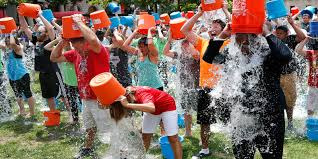
An example was back in 2014 call #IceBucketChallenge. The viral challenge, which went viral on the internet in 2014, is making a comeback. To raise money and awareness for charity, the challenge involves dousing yourself in freezing water and recording the action. This time, the objective is to inspire people to talk about mental health and to increase awareness of it (BBC 2025).
References
Bruns, A., & Burgess, J. (2015). Twitter hashtags from ad hoc to calculated publics. In N. Rambukkana (Ed.), Hashtag Publics: The Power and Politics of Discursive Networks (pp. 13–28). Peter Lang.
The Ice Bucket Challenge is back, here’s what you need to know. (2025, April 28). BBC Newsround. https://www.bbc.co.uk/newsround/articles/ckge4xmjpejo#:~:text=Back%20in%202014%20the%20viral,people%20to%20talk%20about%20it.
0 notes
Text
Week 5: Digital Community and Fandom: Reality Tv Case
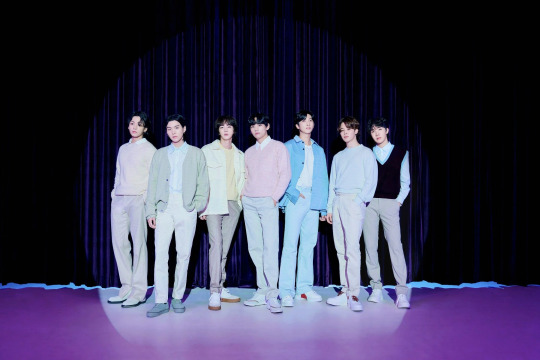
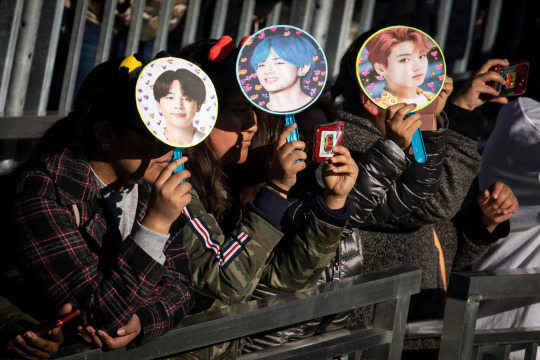
Groups of people who communicate, share, and develop bonds using digital platforms and technologies are known as digital communities. These communities mostly function through online platforms like forums, social media, apps, websites, or virtual worlds and are usually built around common interests, objectives, identities, or pastimes (Rheingold 1993).
Fandoms emerge when people bond over shared admiration for cultural creations. Series, movies, novels, musicians, and games spawn fervent followings whose passion knows no bounds. Subcultures form as fans congregate online and in real life to dissect details, debate virtues, and craft original tributes. Whether advocating for beloved characters, discussing nuanced plots, or generating new artwork, members express themselves freely within a community of like-minded souls. No two paths in fandom are alike; some immerse through intense theorizing, others via rule-bending fan creations. Yet all are united in their desire to experience beloved worlds from every angle and keep those worlds alive (Grossberg 1992).
Nowadays both can be in the same boat. One of the most well-known instances of fandom and digital communities is the BTS ARMY, which is the worldwide fan base for the South Korean band BTS. Adorable Representative M.C. for Youth, or the ARMY, is a prime example of how digital platforms promote cultural influence, community, and teamwork. Trending hashtags, translating interviews, fan art, streaming music, and planning online events are just a few of the many interactive activities that ARMY members do on Twitter, TikTok, Instagram, Reddit, YouTube, and Weverse.
According to (Jenkins 2006) fans in this digital fandom are active contributors rather than passive consumers, exemplifying what is known as participatory culture. Additionally, the BTS ARMY have used their collective power for charity causes. For example, the fandom raised almost $1 million in a single day to equal BTS's 2020 gift to the Black Lives Matter campaign (Yoon 2020). These initiatives are fully organised online, demonstrating the level of dedication and the capacity for organisation that internet fan networks offer. The ARMY's activities also embody the idea of networked publics digitally connected individuals who come together around shared interests, forming dynamic cultural ecosystems (Boyd 2010). Fandom has developed into a multinational, digitally mediated force that has real-world effects in social, cultural, and political domains, as this case illustrates.
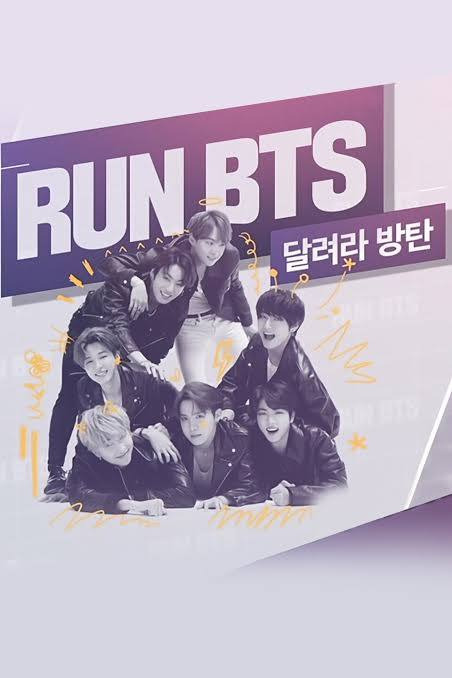
Run-BTS (2015-2023) A long-running variety show produced by BigHit Entertainment (now HYBE), Run BTS! features the group engaging in games, cooking competitions, challenges, and scripted skits. It is widely accessible through platforms like Weverse and YouTube, creating a regular, casual window into BTS’s personalities beyond their music.
As usual, Run BTS's happiness is centred on wise business decisions for the team. When they first started out, they were not frequently invited to variety shows because they were from a small firm (Big Hit) that was not part of the K-pop clique. Consequently, they produced their own show rather than waiting for the invitation. Particularly the ones where they created the confessional sketches, some of the early Run BTS songs are embarrassing (Gerstner 2023).
References
Grossberg, L. (1992). Is there a fan in the house? The affective sensibility of fandom. In L. A. Lewis (Ed.), The Adoring Audience: Fan Culture and Popular Media (pp. 50–65). Routledge.
boyd, d. (2010). Social Network Sites as Networked Publics: Affordances, Dynamics, and Implications. In Z. Papacharissi (Ed.), A Networked Self: Identity, Community and Culture on Social Network Sites (pp. 39–58). Routledge.
Jenkins, H. (2006). Fans, Bloggers, and Gamers: Exploring Participatory Culture. New York University Press.
Yoon, H. J. (2020, June 8). BTS Fans Match Group's $1 Million Donation to Black Lives Matter. NPR. https://www.npr.org/2020/06/08/872391206/bts-fans-match-groups-1-million-donation-to-black-lives-matter
Global fandom platform - Weverse. (n.d.). https://weverse.io/bts/media/2-18580414
Gerstner, J. C. (2023, February 24). Dallyeora, Bangtan! Run, BTS! Borahae BTS. https://borahaebts.substack.com/p/dallyeora-bangtan-run-bts
0 notes
Text
Week 7: Digital Citizenship Case Study: Social Media Influencers and the Slow Fashion Movement
The definition of digital citizenship is obviously broad. Influencer marketing is currently the most popular kind of digital citizenship. In the modern world, influencers are quite important. To promote and disseminate trends, each influencer has a specialty.
A user on social media who has gained a reputation in a particular field is known as a social media influencer. These content producers have a wide audience that they can reach and interact with via their genuineness and sharing of knowledge, which may influence others and increase social media engagement. In return for money, free merchandise, or special offers, social media influencers frequently collaborate with businesses to market goods and services to their following (emplifi 2014).

The goal of the slow fashion movement is to enhance the economic, social, and environmental aspects of the fashion industry. It promotes recycling and upcycling as ways to reduce waste and damage to resources from needless manufacturing, which helps to minimise the environmental effect. Ensuring safe and equitable working conditions for workers, especially those in manufacturing plants, helps prevent any potential harmful societal effects. Additionally, paying workers fairly can also enhance the process's economic elements (Zhen 2017).
Retailers have started introducing lines of sustainable apparel, which enhances their brand and demonstrates their dedication to good corporate social responsibility. An intriguing and somewhat contentious instance is H&M's launch of "the Conscious Line," an eco-friendly apparel collection that demonstrates the retailer's strong support for the slow fashion movement (Zhen 2017). Conversely, in 2011, fashion labels would typically offer five collections year; H&M, on the other hand, issued twelve to sixteen (McFall-Johnsen 2019) , providing the damage they have caused to the environment in the past by contributing to fast fashion.
Slow fashion seeks to provide "sustainable fashion," in contrast to quick fashion, which has a detrimental influence on the environment (Zhen 2017) that guarantees customers' fundamental requirements are satisfied and their lifestyles are improved; thus, the movement lessens its influence on our natural resources.
References
Emplifi, 2024, What is a social media influencer?, viewed 18 June 2024, https://emplifi.io/definitions/social-media-influencer
Lai, Z, Henninger, C & Alevizou, P 2017, “An Exploration of Consumers’ Perceptions Towards Sustainable Fashion – A Qualitative Study in the UK”, Sustainability in Fashion A Cradle to Upcycle Approach, pp. 81-101.
Mcfall-Johnsen, M 2019, The fashion industry emits more carbon than international flights and maritime shipping combined. Here are the biggest ways it impacts the planet., Business Insider, viewed 18 June 2024, <https://www.businessinsider.com.au/fast-fashionenvironmental-impact-pollution-emissions-waste-water-2019-10?r=US&IR=T>.
0 notes
Text
Week 6: What is Digital Citizenship?
When someone utilises computers, the internet, and other digital technologies to interact with society in any capacity, they are exhibiting digital citizenship. The global community is growing increasingly reliant on the internet for daily tasks as a result of the rapid evolution of technology. That is why teaching digital citizenship and literacy to today's youth is so important.
For pupils, practicing good digital citizenship involves involving them and demonstrating to them how to use digital technologies to connect, empathise, and build lifetime relationships. Cyberbullying, careless social media use, and a general ignorance of safe internet usage are examples of bad digital citizenship (Hummel 2024).
Online harassment may take many different forms, including intimidation, doxing, revenge porn, and shaming (Marwick & Caplan 2018). Women are more likely to experience harassment than men, especially gay and ethnic women. Some may even accept it as a standard aspect of using social media (Marwick & Caplan 2018) Instead of making people feel bad about themselves, social media should be a platform for self-expression that is free from criticism. Those who consider harassment to be a regular part of life and who routinely put themselves through unpleasant circumstances that might jeopardise their safety and mental health are pretty disturbing.

While gaslighting is less widespread than harassment, it is nonetheless an abuse tactic that some people experience. "Psychological manipulation of an individual to undermine their sense of self and sanity" is known as gaslighting (Gleeson 2018). It may be quite destructive for individuals who are gaslighted, since people frequently use it to feel in control of or powerful over others. Gaslighting is typically used in personal relationships, but it may also happen when celebrities or influencers try to manipulate their fans or followers through manipulation. Recent instances of this that are often reported in the media include Donald Trump's numerous charges that media outlets are disseminating “fake news” (Gleeson 2018). By doing this, he is hoping to manipulate his followers into being dependent on him and turning them against the media, giving him the upper hand over what they should and shouldn't think.
People can choose from a number of alternatives to halt harassment and abuse, depending on how severe it is. Depending on how serious it is, people may go to the police or seek legal assistance. In addition, users may go straight to the platforms and modify their settings to control who they can and cannot communicate with, as well as report or ban certain people.
There are several ways that online abuse and harassment can transpire, and as a result, there are numerous approaches to addressing it, as no one needs to be subjected to such detrimental conduct.
References
Gleeson, J 2018, Explainer: what does 'gaslighting' mean?, The Conversation, viewed 18 June 2024, <https://theconversation.com/explainer-what-does-gaslighting-mean-107888 >.
Marwick, A & Caplan, R 2018, ‘Drinking male tears: language, the manosphere, and networked harassment’, Feminist Media Studies, vol. 18, no. 4, pp. 543-559.
Hummel, B 2024, What Is Citizenship & How Do You Teach It?, viewed 18 June 2024, https://www.icevonline.com/blog/what-is-digital-citizenship
0 notes
Text
Week 5 Digital Community and Fandom: Reality TV Case Study
Admit it or not, reality television is a genre that you either love or detest. It has existed for close to thirty years in Australia. Since the early 1990s and 2000s, the majority of reality TV programmes have remained popular and are currently in production. The Block, Dancing With the Stars, Big Brother, and Survivor are a few examples. Why, therefore, does no one want to acknowledge that they like watching reality TV, given that the shows have been around for decades and have continuously high ratings?

66% of Australians admit to watching reality TV, especially dating shows, according to new AMPD Research research, yet 34% of those people lie about it. People who took part in the study admitted lying because they were embarrassed to say so. These Aussies are pretty comical in their contradictions about lying to each other. Imagine a bunch of coworkers who pretend to be friends and pretend that they haven't watched the newest season of "trash TV," but in fact, they are all sneaking home to watch Married at First Sight together. Reality television has been extending beyond television to other platforms since social media was introduced ten years ago.
Reality TV consumption and distribution have been greatly influenced by social media. Social media engagement is becoming the main focus of producers' marketing strategies as they use it to engage audiences. This method was called a "feedback loop whereby television and social media content feedback onto each other in a cycle" by L'Hoiry. The audience is being pushed to interact on several channels by this. In addition to developing memes about the programme that encourage fans to share, producers are posting "first looks" and "exclusive behindhe-scscenes content" on social media.
Reality television is generating new markets and greater viewer involvement by fostering multi-platform engagement through social media. Despite the widespread stigma associated with admitting to watching reality TV, the growing consumption across platforms is increasing viewer engagement, whether or not the public admits to it.
References
AMPD Research 2019, Australia: SVOD Study, pp. 3-16.
Graham, T & Hajru, A 2011, “Reality TV as a trigger of everyday political talk in the net-based public sphere”, European Journal of Communication, vol. 26, no. 1, pp. 18-32.
L'Hoiry, X 2019, “Love Island, Social Media, and Sousveillance: New Pathways of Challenging Realism in Reality TV”, Frontiers in Sociology, vol. 4.
0 notes
Text
Week 12 : Crowd sourcing in times of crisis
The term "crowdsourcing" refers to the process of acquiring necessary ideas, materials, or services by asking a large number of people, particularly those in the online community, to contribute rather than hiring conventional workers or suppliers (Merriam Webster 2019).
According to (Riccardi 2016) the use of social media and the Internet to "virtually" harness people's strength and unite them in support of a crisis is another definition of crowdsourcing.
Journalist Jeff Howe introduced the phrase "crowdsourcing" for the first time in 2006 (Ghezzi 2017). The British government, however, offered a £20,000 reward for a device that could accurately measure longitude and, as a result, improve maritime safety and lower the number of sailors who lost their lives in 1714, making that one of the earliest known instances of crowdsourcing. This was done through the Longitude Act of 1714. The first marine chronometer was created as a result of this (Dunn 2014).
With a wide range of tools at their disposal, digital citizens may now swiftly raise global awareness of problems and natural catastrophes while also seeking answers and aid. This is made possible by the affordances provided by the internet and social media networks.
Since the 2011 Japanese earthquake and tsunami, Facebook has started creating disaster response capabilities. Beginning in 2014 with the release of their Safety Check product, they started with a discussion board. They subsequently included fundraisers and community assistance. All of these features were merged by Facebook in 2017 into a single resource known as the Crisis Response Centre (Nocak 2017).
"People affected by crises can find or offer help, stay updated on news and information, and let friends know they're safe" with the help of Crisis Response" (Facebook 2019).
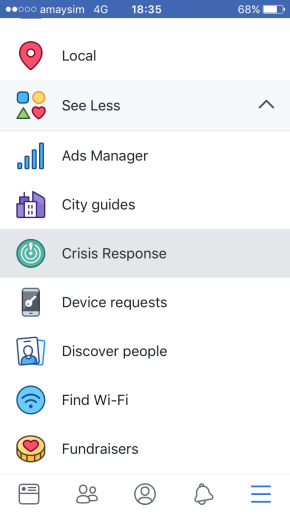
Sadly, insufficient data gathering and limited access to reliable information can have a detrimental effect on emergency and humanitarian relief activities during times of disaster. On the other hand, by visualising data and hotspots, crowdsourcing crisis mapping may support efforts by facilitating the analysis and design of successful tactics. Prominent crisis mapping organisations and software resources comprise: UN Global Pulse, Crisis Mappers, Crisis Commons, Digital Humanitarian Networks, Ushahidi, Google Crisis Response, and the Standby Task Force (Skuse 2019).
A group of volunteers that volunteer for crisis mapping gathered information on the state of hospitals and clinics in the Bahamas following the destruction caused by Hurricane Dominic in 2019 and called themselves the Bahamas Standby Task Force. Maps have given first responders vital information on population mobility during emergencies as well as access to medical facilities and supplies, according to DirectRelief.org (Smith 2019).
Studies conducted on crowdsourcing responses to disasters such as flooding in Pakistan, wildfires in Colorado, and earthquakes and storms in Haiti have demonstrated that crowdsourcing helps emergency management prioritise and organise volunteers and resources more effectively. Online crowdsourcing has proven to be a potent and useful method for drawing resources to crisis situations and increasing public awareness, thanks to our global connection (Riccardi 2016).
References
Crowdsourcing, 2019, Merriam Webster, viewed 18 June 2024, <https://www.merriam-webster.com/dictionary/crowdsourcing>;.
Dunn, R 2014, The History, Longitude Prize.Org, viewed 18 June 2024, <https://longitudeprize.org/about-us/history>;.
Ghezzi, A, Gabelloni, D, Martini, A, & Natalicchio, A 2017, Crowdsourcing: A Review and Suggestions for Future Research’. International Journal of Management Reviews. 10.1111/ijmr.12135.
Nowak, M 2017, ‘A New Center for Crisis Response on Facebook’, Facebook Newsroom, viewed 18 June 2024, <https://newsroom.fb.com/news/2017/09/a-new-center-for-crisis-response-on-facebook/>;.
Skuse, A 2019, ‘Crowdsourcing and Crisis Mapping in Complex Emergencies’, Australian Civil-Military Centre or the Australian Government, viewed 18 June 2024, This paper is published under a Creative Commons license, viewed 18 June 2024, <https://www.adelaide.edu.au/accru/projects/ACMC2/Crowdsourcing_and_Crisis_Mapping_Final_ISBN.pdf>;.
Riccardi, M 2016, ‘The power of crowdsourcing in disaster response operations’ International Journal of Disaster Risk Reduction, vol 20, pp 123-128.
Smith, N 2019, ‘In Hurricane Dorian’s Wake, Maps Provide Essential Insights for First Responders’, DirectRelief.Org, viewed 18 June 2024, <https://www.directrelief.org/2019/08/in-hurricane-dorians-wake-maps-provide-essential-insights-for-first-responders/>;.
0 notes
Text
Week 11 : Digital Citizenship and Conflict: Social Media Governance
It's common to see online digital communities as harmonious, inclusive spaces free from problems. Conflicts abound with digital citizenship, though. Digital citizenship is about power, as seen by conflicts on social media. This authority extends to speech, platforms, and resources. With certainty, who controls social media and the internet? Since the business grows so rapidly, social media governance is becoming a bigger problem. Both macro and micro settings require supervision. This government frequently consists of a convoluted web of conflicting interests.
The act of harassing someone is frequently planned and managed in networks (Marwick & Caplan 2018). Particularly during the Gamergate online scandal, the majority of the heinous tactics employed in networked harassment have now been connected to assaults on women (Marwick & Caplan 2018). These included social shaming, intimidation, doxing (publishing personal information online), and image-based abuse or revenge porn (Marwick & Caplan).
The Guardian's analysis discovered that online biases, prejudices, and oppressions are frequently mirrored in cyberbullying and cyberhatred (Gardiner 2016). Their investigation produced proof of this. They discovered that of the 10 most harassed writers, eight were women and the two were black, based on their analysis of the 70 million comments made on their pieces in 2006 (Gardiner 2016). No matter what the topic of the piece is, female authors encounter and get more hate and trolling than male writers do (Gardiner 2016).
Currently, Australia lacks a single piece of legislation that forbids harassment or bullying conducted online. Certain legislation, including the Criminal Code Act of 1995, does provide some protection nonetheless. Pressure from the platforms themselves, in my opinion, should and could be used to do more. Incorporating the principles of polite platform usage outlined in their terms of service, together with stricter content monitoring, is necessary. If we, as a community, can put pressure on these platforms to step up, we might just get through to them. The majority of this conflict and abuse originates from social media sites.
References
Marwick, A & Caplan, R 2018, ‘Drinking male tears: language, the manosphere, and networked harassment’, Feminist Media Studies, vol. 18, no. 4, pp. 543-559.
Gardiner, B, Mansfield, M, Anderson, I, Holder, J, Louter, D & Ulmanu M 2016, The dark side of Guardian comments, The Guardian, viewed 18 June 2024, https://www.theguardian.com/technology/2016/apr/12/the-dark-side-of-guardian-comments
0 notes
Text
Week 10: Gaming communities, social gaming and live streaming: twitch
In one way or another, we're all gamers. In their free time, some people use gaming as a means of self-entertainment and relaxation, while others use it as a means of social interaction with friends and family. From then on, the gaming industry has advanced significantly, becoming one of the most prosperous and successful worldwide (Chikhani 2015). The gaming business has seen changes in the 21st century and has gained exposure to a new demographic because of "mobile technology." To the extent that "42% of Americans are gamers," it has now been assimilated into "modern popular culture" (Chikhani 2015). Live streaming was developed as a way for streamers on Twitch and Mixer to share their experiences and material with viewers in response to the rising demand for media and the gaming industry.
Known by his stage name "Ninja," Tyler Blevins is a well-known Mixer streamer who creates material with the intention of entertaining viewers. Using his streaming service, Ninja made connections with JuJu Smith-Schuster, Travis Scott, and Drake in 2018. This particular webcast attracted over "635,000 viewers," demonstrating the power of gaming to foster human connection and communication (Thier 2018).
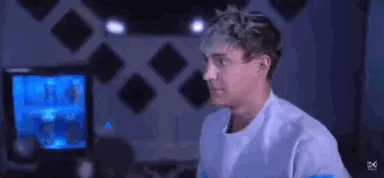
As opposed to Ninja, another streamer, Kyle Giersdorf, also known as Bugha on his social media accounts, is a well-known figure in the globe after taking first place in the inaugural Fortnite Globe Cup, which took place at the "U.S.T.A. Billie Jean King National Tennis Centre in New York," and earning a reported $3 million in addition (Taylor, D, B & Chokshi, N, 2019). Bugha's success in streaming and online gaming shows that there is a second reason people play games: to make money.


Playing video games might provide you with a "fresh start" since they take away your "physical identity," among other advantages. Every person is treated equally and evaluated based more on their "contribution" than on their identity. While gaming may only be considered a pastime for some, it can also be a means of fostering new friendships and improving existing ones. (Sturart 2013). People who "attract hateful [and] damaged" information will always exist, but gaming offers a "playful space" where bad conduct is not physically tolerated (Sturart 2013). Because gamers may spend money on in-game purchases like upgrades or cosmetics, gaming can also result in higher expenses and debt. This was demonstrated by "EVE Online's multiplayer game," in which a user lost $300,000 "because they forgot to pay a bill to defend their base" (Thornhill 2014). Another issue facing the industry is gaming addictions, as individuals, particularly kids, are growing dependent on the sector and becoming "more aggressive" while "socialising less" (Sinha 2018).
Through the use of objects to engage in behaviours that are moulded by objectives, rules, and representations, participants with resources may organise social spaces through social games. The social game generates game space and time as well as game outcomes (Stolz 2023). Zynga is the ideal illustration of a social game. Applications like Draw Something, Words with Friends, ZyngaPoker, and Farmville are well-known from this firm (Znga 2020). It has a terrible reputation for pressuring players to pay for in-game features that raise the industry's valuation. To "challenge Twitch [and] YouTube," social media platforms such as Facebook have since enhanced their gaming experiences. New features in the Facebook app that let users "watch," "play," and "connect" with other gamers demonstrate this (Hutchinson 2020). Due to the growing desire for and renown of the gaming sector, which has been able to adapt to society by being interwoven with "modern popular culture," gaming, live streaming, and social gaming have grown increasingly popular in the twenty-first century (Chikhani 2015).
References
Chikhani, R 2015, The History Of Gaming: An Evolving Community, Extra Crunch, viewed 19 June 2024, https://techcrunch.com/2015/10/31/the-history-of-gaming-an-evolving-community/.
Stolz, J 2023,The theory of social games: outline of a general theory for the social sciences. Nature, viewed 18 June 2024, https://www.nature.com/articles/s41599-023-01862-0#citeas
Hutchinson, A 2020, Facebook Launches New Gaming App to Challenge Twitch, YouTube, SocialMedia Today, viewed 19 June 2024, https://www.socialmediatoday.com/news/facebook-launches-new-gaming-app-to-challenge-twitch-youtube/576393/.
Sinha, R 2018, 15 Biggest Fortnite Controversies That Shocked Players (Maybe), Gaming Bolt, viewed 19 June 2024, https://gamingbolt.com/15-biggest-fortnite-controversies-that-shocked-players-maybe/3.
Stuart, K 2013, Gamer communities: the positive side, The Guardian, viewed 19 June 2024, https://www.theguardian.com/technology/gamesblog/2013/jul/31/gamer-communities-positive-side-twitter.
Taylor, D, B & Chokshi, N 2019, This Fortnite World Cup Winner Is 16 and $3 Million Richer, The New York Times, viewed 19 June 2024, https://www.nytimes.com/2019/07/29/us/fortnite-world-cup-winner-bugha.html?fbclid=IwAR1Btl0Wov1zr2IligsL3PizeLYDnKBx4Oo62IqAjjNw2mzUpvIOuYCCPVE.
Thier, D 2018, When Drake And Ninja Play ‘Fortnite’ On Twitch, Jeff Bezos Takes Home A Victory Royale, Forbles, viewed 19 June 2024, https://www.forbes.com/sites/davidthier/2018/03/18/when-drake-and-ninja-play-fortnite-on-twitch-jeff-bezos-takes-home-a-victory-royale/?fbclid=IwAR1alde-xFCQ5Tw2TnXOuAEfmWGfpGx0kywHgoE9WEjLtmr0VM1N03_7xzk#30f10eae6cbc.
Thornhill, T 2014, The online videogame battle that cost $300,000: Gamers see hundreds of costly spaceships destroyed after user forgot to pay bill to defend their base, Daily Mail Australia, viewed 19 June 2024, https://www.dailymail.co.uk/news/article-2547908/EVE-online-sees-biggest-battle.html.
Zynga, Free Mobile and Online Games, Zynga, viewed 19 June 2024, https://www.zynga.com/.
0 notes
Text
Week 9: Digital Citizenship and Software literacy
Instagram filters have advanced significantly from the days when they could just slightly alter brightness and exposure. These days, people's cosmetic modifications are becoming excessive. I saw that the same characteristics on Instagram are always changing as I browsed through the filters and gave them a try. My face and nose are slimmer, my skin is smoother, and my lips are growing larger.
Whether they are discussing a cosmetic product or giving us an update on their day, the majority of influencers and micro-celebrities that I follow on Instagram nearly always apply a filter to themselves. It's depressing to observe how many people now accept it as the standard.
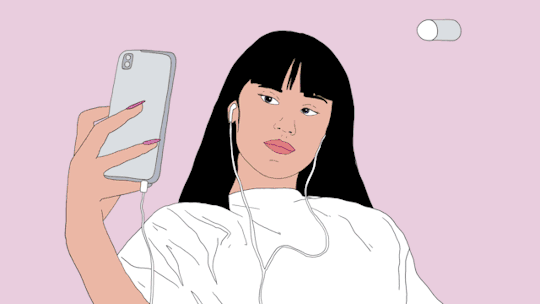
The Advertising Standards Authority in the UK banned the use of "misleading" filters to promote beauty companies due to the extent to which these filters are embellishing reality (ASA 2020). Although these are the regulations governing advertising in the UK and may not be applicable in Australia, I think this is a start in the right way to stop deceptive social media ads. "An ongoing focus of our work in this area continues to be on raising awareness of the rules and supporting influencers with the guidance and tools they need to help get their ads right," according to an ASA spokeswoman (British Beauty Council 2021). The purpose of this restriction is to prevent deceptive promotion of cosmetic product "results." Consider an influencer showcasing how flawless and streak-free a fake tan can be while utilising a filter to deepen and smooth her skin.
This week's reading brought to light the needless pressure women face to "strive for a more "perfected" picture of themselves on the internet in order to fit in with society (Coy-Dibley 2016).
In my opinion, the use of Instagram filters is distorting beneficial interactions with digital technology and enhancing reality. We can tell when something is getting out of control and preventing us from distinguishing between what is genuine and what is enhanced when the ASA needs to create laws to outlaw the use of filters.
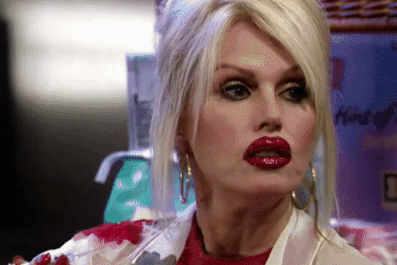
References
ASA, 2021, We Are Luxe Ltd t/a TANOLOGIST TAN, in association with Cinzia Baylis-Zullo, viewed 18 June, 2024, https://www.asa.org.uk/rulings/we-are-luxe-ltd-t-a-tanologist-tan-in-association-with-cinzia-baylis-zullo.html
BBC, 2021, Influencers told not to use 'misleading’ beauty filters, viewed 19 June, 2024, https://www.bbc.com/news/uk-england-55824936
Coy-Dibley, I 2016, ‘ “Digitized Dysmorphia” of the female body: the re/disfigurement of the image’, Palgrave Communications, vol. 2, no. 1, pp. 1-9.
News, C 2021, The (mis)use of social media beauty filters when advertising cosmetic products, viewed 19 June, 2024, https://www.asa.org.uk/news/the-mis-use-of-social-media-beauty-filters-when-advertising-cosmetic-products.html
0 notes
Text
Reality TV Case Study
Week 8: Digital Citizenship and Health Education: Body Modification on Visual on Social Media
"Digital Citizenship and Health Education, with a focus on social media aesthetic templates and body modification." Body modification is a concept I learned from one of the readings and is a type of "aesthetic template" on Instagram. This specific interpretation serves as an example of the notion that those who are interested in body alteration are "shopping" for attractive models. Aesthetic templates are widely used on social media, particularly Instagram, and were essentially made by microcelebrities. Microcelebrities are people who, for financial advantage, use their social media followings and/or fan bases to endorse things to their followers and admirers.
In order to more successfully reach your audience, visual social media is a type of marketing that involves leveraging photographs, videos, and other visual information (such as infographics) to make your messages stand out from the background noise. It makes sense to implement this system (Infographic 2021). Using social media to enlighten the public about health concerns, improve communication during public health crises or epidemics, and address public reporting of specific public health issues has become an affordable strategy for public health practitioners. Public health's role in the pandemic that they created a campaign, according to (Australian Government 2023) current statistics, there are 2271 million people use Facebook, 326 million Twitter, 1000 million Instagram and 287 million use Snapchat. Consequently, public health initiatives are vying for people's attention and trying to change their conduct via these social media platforms. However, this necessitates continuously adjusting to trends. Body modification on Visual Social Media. Aesthetic Labour employees do aesthetic labour in the workplace by emulating qualities that would appeal to clients in order to generate revenue (Dean, 2005; Witz, Warhurst & Nickson 2003). For example, smiling with sincerity, dressing in a suit and tie and using particular body language and hand gestures.
The next on pornification that emphasis on pornification is on heteronormative notions of sexuality and attractiveness. In Western society, exhibiting sexuality that mirrors the visual appeal of commercial pornography has become commonplace (Drenten & Gurrieri 2019). Pornification is the act of presenting a heteronormative sexuality or "porn chic" style with an eye towards the male market (Drenten & Gurrieri 2019).
References
Public health services, viewed 18 June 2024, https://www.euro.who.int/en/health-topics/Health-systems/public-health-services/public-health-services
The World’s Best Public Health Social Media Campaigns - Bang The Table, viewed 18 June 2024, https://www.bangthetable.com/blog/public-health-social-media-campaigns/
What Is Visual Social Media Marketing (And How Does It Raise Engagement)? [INFOGRAPHIC]. Adweek.com. (2021). viewed 18 June 2024, https://www.adweek.com/performance-marketing/visual-social-marketing/#:~:text=Visual%20social%20media%20marketing%20is,a%20system%20that’s%20worth%20adopting.
1 note
·
View note